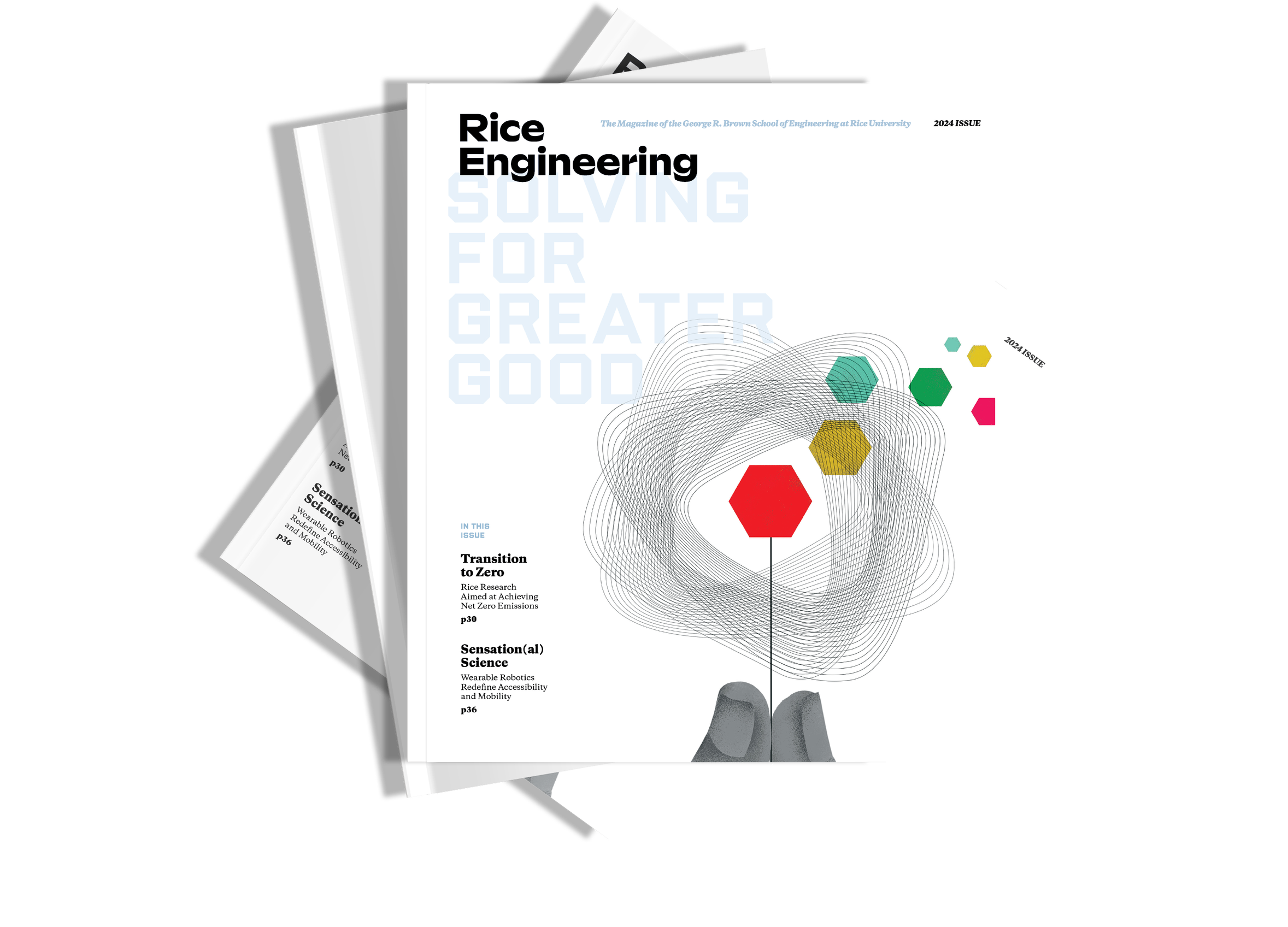
The spring 2024 issue of Rice Engineering Magazine is here!
At Rice Engineering, we are driven by a passion for innovation and a commitment to responsible engineering practices. It’s with great excitement that we unveil the new design of Rice Engineering magazine, which underscores our dedication to excellence in research, education, and service. The 2023-24 issue is full of news about how Rice Engineering is solving for greater good.
Rice Advanced Materials Institute Drives Research for a Greener Future

To realize such ambitious dreams as the energy transition, innovations as diverse as a new generation of energy-efficient microelectronics and the safeguarding of natural resources, calls for the hard work of researchers developing new advanced materials.
“Our approach is pragmatic. The Rice Advanced Materials Institute (RAMI) will accelerate the basic research and applied technology development necessary for addressing these enormous challenges, and we’ll draw upon research from many disciplines,” said Lane Martin, inaugural director of RAMI and Welch Professor of Materials Science and NanoEngineering.
The institute integrates chemistry, physics and materials science, new advances in machine learning and artificial intelligence, and an array of engineering disciplines with the goal of revolutionizing everything from energy systems to sustainable water systems, telecommunications, manufacturing, transportation, security and beyond.
RAMI is housed in the Ralph S. O’Connor Building for Engineering and Science, and will enlist several dozen faculty members
from engineering and natural sciences. “That number will grow,” Martin said, “as more folks are hired.”
Martin foresees research at the institute focusing on three broad fields:
1. Next-generation electronics/photonics with attention to the component materials that enable innovations in energy-efficient, low-power microelectronics ranging from memory/logic, to communications, to sensors and beyond.
2. Energy systems or the materials that
will transform energy storage and conversion/harvesting, assuring that energy is available when needed and maximizing its use.
3. Environmental stewardship or the materials that will assure responsible use of natural resources and long-term stewardship of air, soil and water resources.
About the first research focus area, Martin said, “To put it simply, think about what you wish your electronic devices could do in 20 years. RAMI wants to develop the materials necessary to fulfill those dreams. This work is also critical from an energy perspective because computing is the fastest growing consumer of energy.”
Likewise, analysts predict a 120-times increase in global energy storage needs by 2040. As the transition to renewable energy sources proceeds, and because energy such as solar and wind can’t always be produced without interruption, the demand for storage will reach unprecedented levels.
“Research into electrochemical batteries, capacitive-energy storage and hybrid systems are all being considered,” Martin said. “While we’ve long converted electricity into heat, converting heat back to electricity is more challenging to do efficiently. Researchers are exploring ways to store thermal energy cheaply and at scale. Innovations in energy efficiency, including developing novel energy conversion and harvesting techniques to recover wasted energy, are more important than ever.”
Environmental stewardship has grown in importance as the climate changes. Society, Martin said, must address the lifecycle of materials, from extraction, to design, to production. To address such concerns as upcycling and recycling, and the replacement of rare or toxic materials from supply chains, new materials are needed.
“At the same time, we’re being called upon to remediate the mistakes of the past to assure our lived environment safely supports us. These are some of the most pressing and important problems of our age. Materials scientists and engineers have the ideas and tools to make an impact in these areas, and industry and markets see opportunities in this space,” Martin said.
MATERIALS SCIENCE
Materials engineered at the molecular level pave the way for innovation across industries. Rice engineers focus on developing materials with properties that contribute to more sustainable and environmentally friendly technologies.


